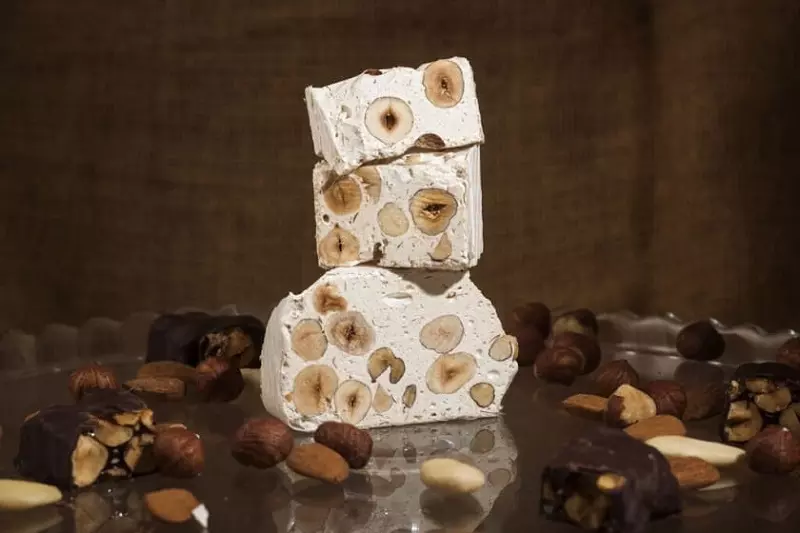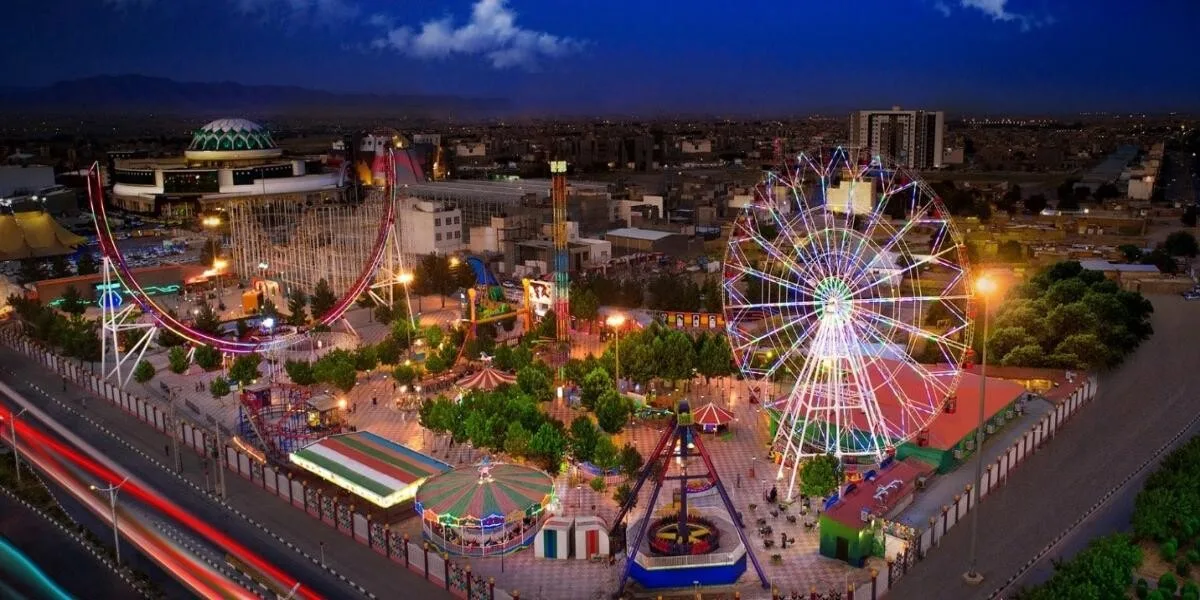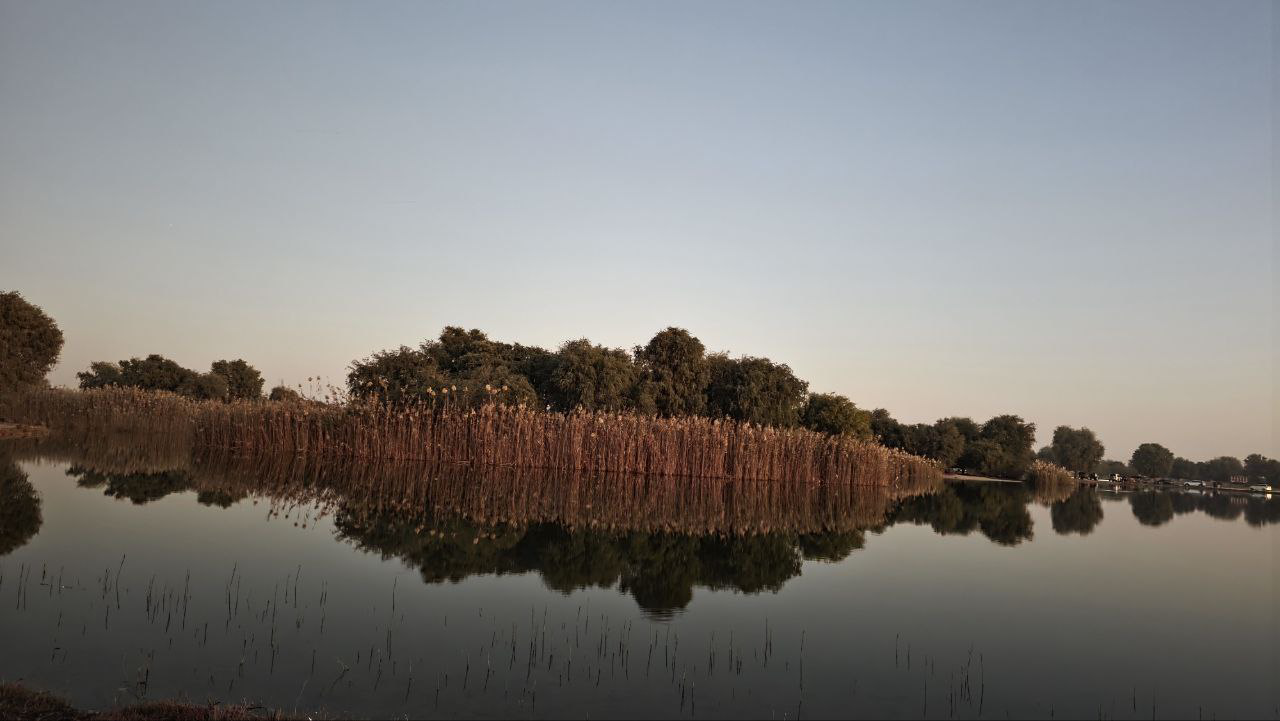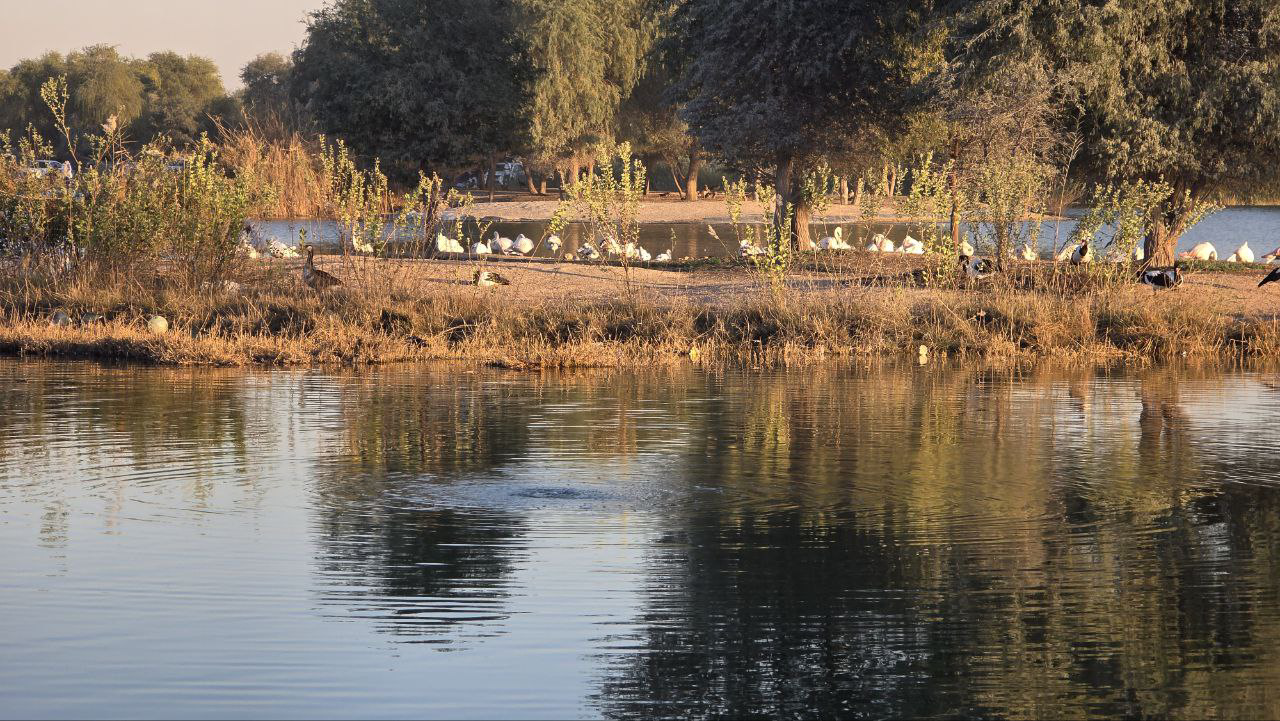Tabriz souvenirs | A collection of delicious, beautifully crafted, and unique delicacies.
Tabriz is one of the most popular tourist destinations in Iran, located in the northwest of the country; a city where you should by no means overlook its culinary delights and handicrafts.
During your trip to Tabriz, after exploring the city and visiting its attractions, do not forget to buy souvenirs from Tabriz for yourself and your loved ones. Tabriz is known for its sweets, chocolates, as well as precious and valuable handicrafts.
Tabriz is the capital of East Azerbaijan province. This city with its ancient history has been the capital of various governments such as the Atabegs of Azerbaijan, Khwarezmshahs, Ilkhanids, Qara Qoyunlu, Aq Qoyunlu, Safavids, Azerbaijani Khanates, and others. Tabriz’s attractions range from historic houses, mosques, and palaces to museums, parks, and shopping centers, attracting thousands of domestic and foreign tourists each year. Stay with us to get acquainted with Tabriz souvenirs.
Tabriz Souvenirs
Nougat
Tabriz is the capital of sweets and chocolates in the country and provides over 50% of the country’s sweets and chocolates; for this reason, sweets are among the most popular and famous souvenirs of this region.
Nougat or “Lokum” is one of the authentic, ancient, and delicious Turkish sweets and a souvenir from Tabriz that most people initially mistake for Isfahan’s gaz. Honey, sugar (or glucose), egg whites, nuts, and sometimes pieces of fruit are the main ingredients of this sweet; it has a soft texture that stretches, and it is usually served between two pieces of flatbread. Nougat is similar to gaz from Qom and Kashan, and it can perhaps be considered a type of nougat.
Nougat is one of the delicious souvenirs and special sweets for holidays, Nowruz, and joyful ceremonies in the city of Tabriz. Nougat is usually prepared in rectangular shapes and comes in various flavors such as cocoa, vanilla, chocolate, walnut, pistachio, almond, and peanut; however, the walnut flavor is the oldest type of nougat in Tabriz. Interestingly, nougat is also made with slight variations in ingredients and preparation methods in several European countries such as Italy, France, Spain, Peru, the Philippines, Puerto Rico, and Cuba.
Qurabiya of Tabriz
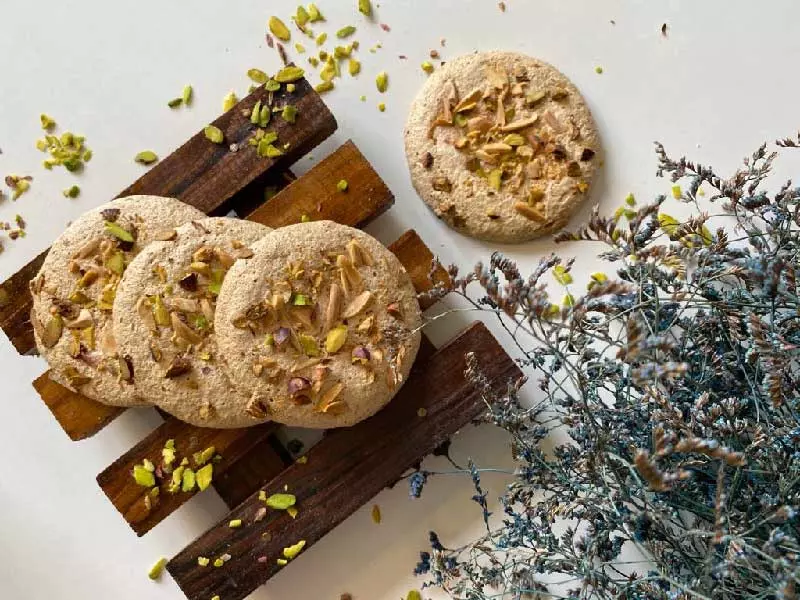
Qurabiya is one of the most expensive sweets of Tabriz and is very popular in regions such as Azerbaijan, Turkey, Greece, Zanjan, Qazvin, etc. This pastry, which is similar to cookies and biscuits, is made with flour, vanilla, almonds, sugar, and eggs, and it is filled with pistachios and almonds on top. Qurabiya of Tabriz is also known as Turkish Qurabiya.
Qurabiya of Tabriz holds a special place in Tabrizi families, and it is usually served at celebrations, weddings, and important occasions. Qurabiya comes in various types such as coconut, chocolate, walnut, and pistachio. Qurabiya was registered as the Sultan of Sweets in the list of intangible cultural heritage of East Azerbaijan province in June 2022.
Baklava
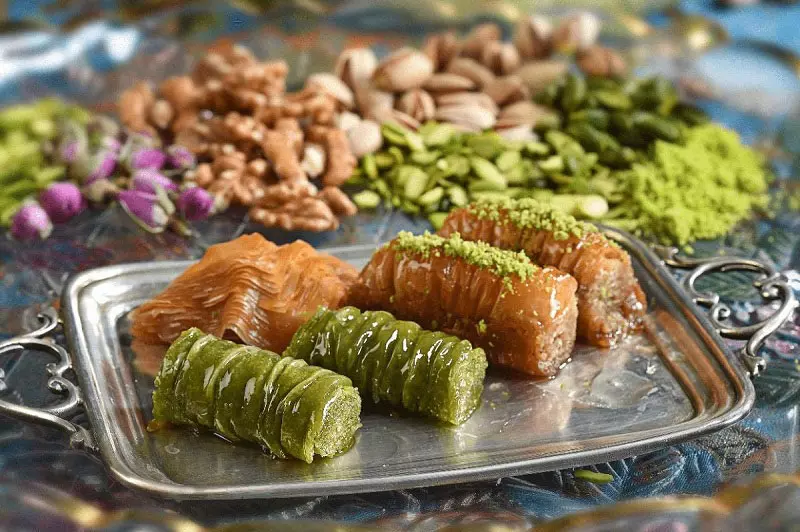
Baklava, a fragrant and authentic Turkish pastry, is one of the sweets that you must try when traveling to Tabriz. As you know, Baklava comes in many varieties and is cooked in different regions such as Qazvin, Kashan, Yazd, Gilan, Tabriz, Sardroud, as well as Turkey, Lebanon, and Syria.
Tabrizi Baklava bears a striking resemblance to Turkish Baklava and is made with phyllo dough, butter, walnut kernels, pistachios, and syrup (a combination of water, sugar, lemon juice, rosewater, etc.). Tabrizi Baklava is served in square, diamond, and cylindrical shapes. It comes in different flavors such as pistachio, coconut, and almond. This traditional pastry is layered and filled with crushed nuts and syrup. According to some historical accounts, the first Baklava in its present form was made in the Topkapi Palace kitchen in Turkey.
Aris

Aris is one of the most popular and sweetest pastries of Tabriz. This fragrant pastry is made with milk, sugar, vanilla, pistachios, cocoa, etc., and it comes in various types such as cocoa Aris, milk Aris, crispy Aris, and Tasbih Aris (in the form of Tasbih beads and coarse). All types of Aris, except for Tasbih Aris, are prepared in pistachio and plain varieties.
Aris, also known as “dry ice cream” or “sweet lolly,” is usually enjoyed with tea instead of sugar; a dry confection that is easily portable. Tabrizi Aris was first cooked and introduced to the market by a person named Ali Akbar Sadaghat in 1289 AH (Solar Hijri calendar). He was the manager and owner of Sadaghat confectionery (among the first confectioneries in the city) in the Tabriz Bazaar; a person who, after some collaboration with Sadegh Ekrami (manager of Rex confectionery in Tabriz), founded the Tabriz Confectioners’ Union. Today, the descendants and even grandchildren of Ali Akbar Sadaghat in Tabriz are recognized as one of the largest producers of Aris sweets and other traditional souvenirs of Tabriz city.
Dry Aris or Churthameh
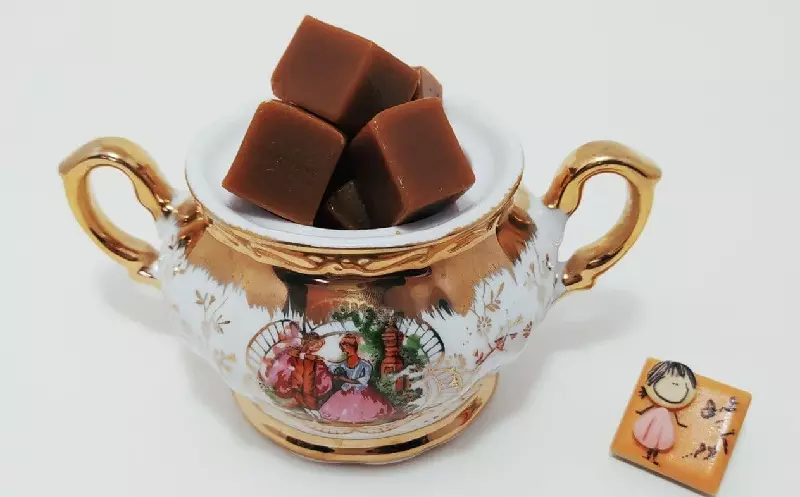
Churthameh or dry Aris is another delicious souvenir from Tabriz, which has a drier and firmer texture than Aris; however, its taste, aroma, and preparation method are similar to Aris. Churthameh serves as a very suitable alternative to sugar and is produced in square shapes and in colors of brown and cream.
Rahat-ul-Hulkum
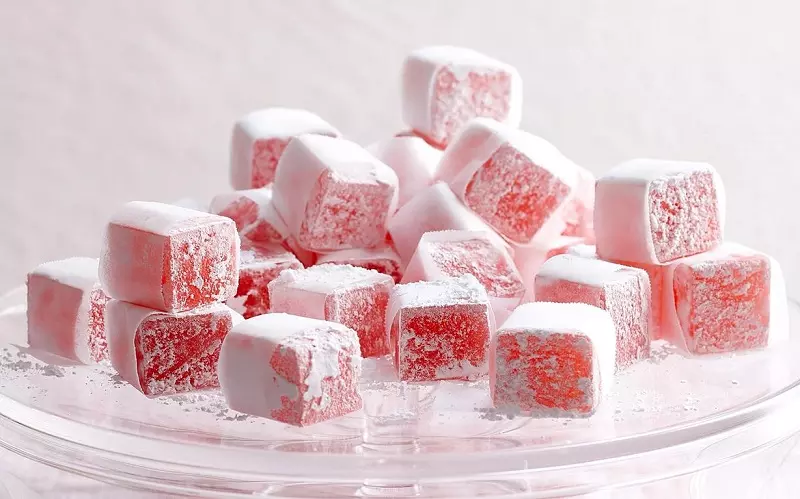
Rahat-ul-Hulkum is one of the oldest sweets in the world. It is a soft and delicate confectionery that melts in the mouth like sugar. Cornstarch, sugar, water, rosewater, and flour are the primary ingredients for making Rahat-ul-Hulkum; a delicacy that holds a special place in the Yalda Night nuts tray, usually flavored with rosewater, bergamot, lemon, or cinnamon, and garnished with chopped walnuts, pistachios, almonds, along with coconut powder.
Tabrizi Rahat-ul-Hulkum is prepared in 24 different flavors, among which include Rahat-ul-Hulkum with rosewater, Kendir, plain Rahat-ul-Hulkum, mint, coffee, etc. Rahat-ul-Hulkum with jelly, nutty Rahat-ul-Hulkum, flag Rahat-ul-Hulkum, roll Rahat-ul-Hulkum, and gem-studded Rahat-ul-Hulkum are among the various forms of this delicious confectionery.
Halva Bozorg
Halva Bozorg is another traditional sweet from Tabriz and Maragheh, with a dark color, made from the seed of a plant called Borzak (from the flax family). This sweet is very useful for bone pain, treating osteoporosis, and general body strengthening, and you can find it not only in confectionery shops but also in herbal shops. Ground Borzak seeds, powdered sugar (or grape syrup), white flour, butter or liquid oil, and water are the primary ingredients of Halva Bozorg; a sweet also known as “Halvasi Borzeh” in Maragheh.
Tabrizi Lahtiya

Lahtiya is a type of creamy dessert that has many fans and is cooked in many parts of the country; however, its Tabrizi version with a different aroma and taste will surprise you. Tabrizi Lahtiya, a ceremonial sweet, is served at gatherings and social events, especially during Nowruz. Interestingly, the roots of Lahtiya sweet trace back to Tabriz, and this sweet has spread from this city to other parts of Iran.
Tabrizi Lahtiya, with its soft and tender texture, consists of two pieces of bread filled with cream and powdered pistachios. White flour, cornstarch, sugar, eggs, baking powder, vanilla, salt, powdered sugar, powdered pistachio, and cream form the primary ingredients of Tabrizi Lahtiya.
Sesame Sweets
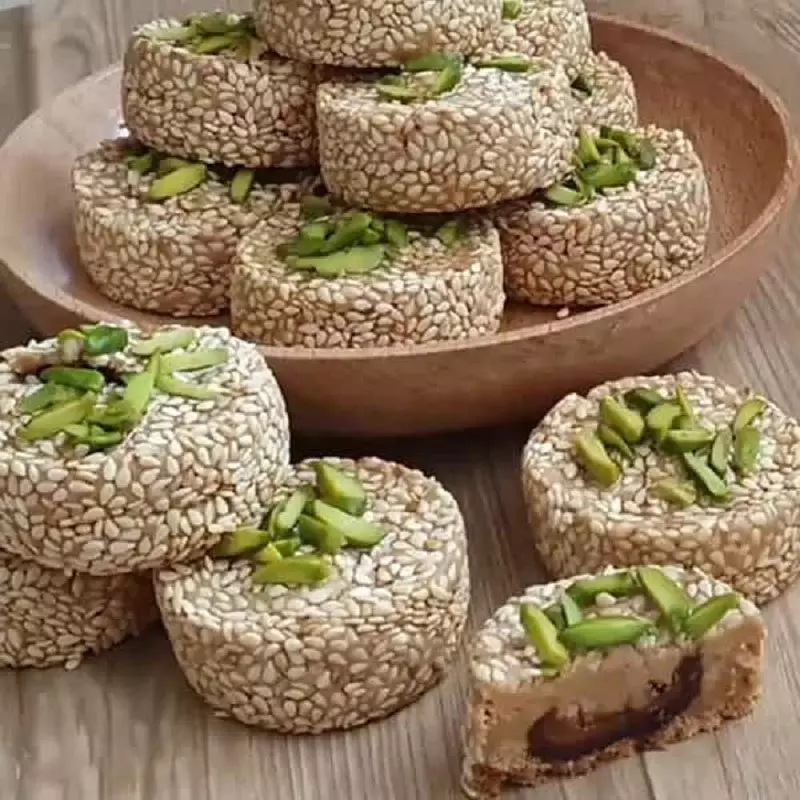
Sesame sweets, or Sesame Sohan, are among the delicious, healthy, and nutritious souvenirs of Tabriz. They are prepared with a large amount of sesame seeds, egg yolks, and sugar, and are served at celebrations, parties, and gatherings. The dough for these sweets is made with flour and topped with sesame seeds, while inside, they are filled with dates and crushed walnuts. Sesame sweets can be stored in a container in the refrigerator for up to a week.
Finger Twist Sweets
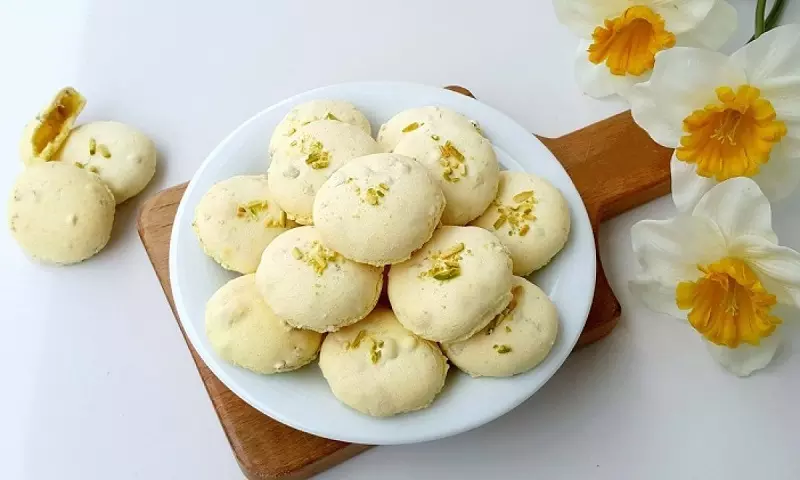
Finger twist sweets, or Walnut Puff, are special treats for the days of Nowruz in Tabriz. They are easily made with egg yolks, chopped walnuts, vanilla, powdered sugar, and pistachios. Interestingly, these sweets have many fans in all cities of Iran and even worldwide, being exported to countries like Turkey, Iraq, England, Russia, Pakistan, Kuwait, the Emirates, and London.
Tabrizi Louz (Almond Paste)

Louz is one of the famous Iranian sweets found in Tabriz, Kerman, Isfahan, and Yazd. However, Tabrizi Louz differs significantly from other types of Louz in terms of preparation. Tabrizi Louz is cooked with a large amount of saffron, almond powder, water, cream of tartar, and pistachio kernels. It’s a sweet that is usually seen on the tables of Tabrizi households during Nowruz. The preparation of Louz is straightforward, and it can be made in flavors like coconut, vanilla, chocolate, or even two-tone varieties.
Red Rose Jam

Red rose jam, or Gol Mohammadi jam, is a famous souvenir from Tabriz that many people purchase. Although the birthplace of Mohammadi roses is Kashan, Tabrizi Mohammadi roses also have a unique and unparalleled aroma. Unlike Kashani people who make rosewater from Mohammadi roses, Tabrizi people make jam and call it “Qizil Gul Murabasi.”
Tasbih Chocolate

Tasbih chocolate is a delicious Tabrizi sweet made from combining two types of dough in white and brown colors. Sugar, glucose, vanilla, butter, baking powder, cocoa powder, powdered milk, etc., are the primary ingredients of Tasbih chocolate.
Tabrizi Oil Bread
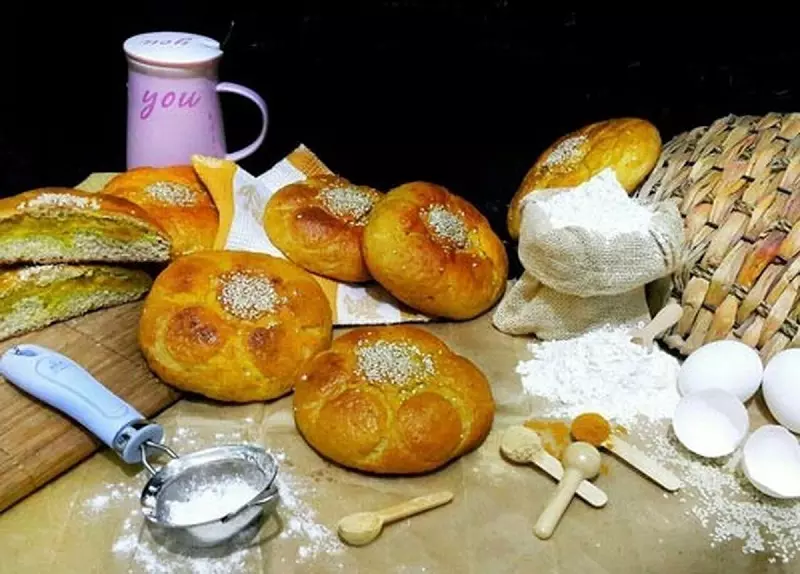
Tabrizi oil bread, or Eshkeneh Kooka, is a local and delicious bread from Tabriz, with its tempting aroma always reaching the noses of the city’s bakers. This special bread, considered one of Tabriz’s souvenirs, is made with milk, flour, water, ginger, egg yolks, and yogurt. It is usually served warm in two simple and nutty forms.
Ketayi Noodle Sweet

Ketayi noodle sweet is one of the popular treats during the month of Ramadan in Tabriz. This sweet is made with Ketayi noodles, butter, and powdered sugar. To enhance its flavor, a combination of ginger, cinnamon, powdered rose, and rose water is added. Ketayi noodle sweet is a stomach-filling sweet similar to Turkish Kataifi, and it’s usually filled with various nuts like pistachios and almonds.
Tabrizi Dried Fruits and Nuts
Apart from sweets and chocolates, Tabriz has other edible souvenirs, among which Tabrizi dried fruits and nuts are notable. Tabrizi dried fruits and nuts are not only famous throughout Iran but also worldwide and are considered export commodities of the region. Sour, raw, and dried fruit nuts are among the most popular Tabrizi souvenirs.
Tabrizi Leekawun Cheese

Tabrizi Leekawun cheese is a soft and creamy dairy product. Leekawun cheese, also known as Azerbaijani cheese or white cheese of Azerbaijan, is one of the most famous Tabrizi souvenirs available in all shops across the city. This dairy product is made from fatty sheep’s milk.
Leekawun cheese is one of the authentic and ancient Iranian cheeses that was first made in the village of Leekawun near Tabriz and then gained international fame. It is made from the milk of sheep grazing in the Sahand Mountains, giving it an extraordinary taste and aroma. Leekawun cheese has few large holes, a soft and creamy texture, and is very rich in flavor.
Tabrizi Carpets and Tapestry
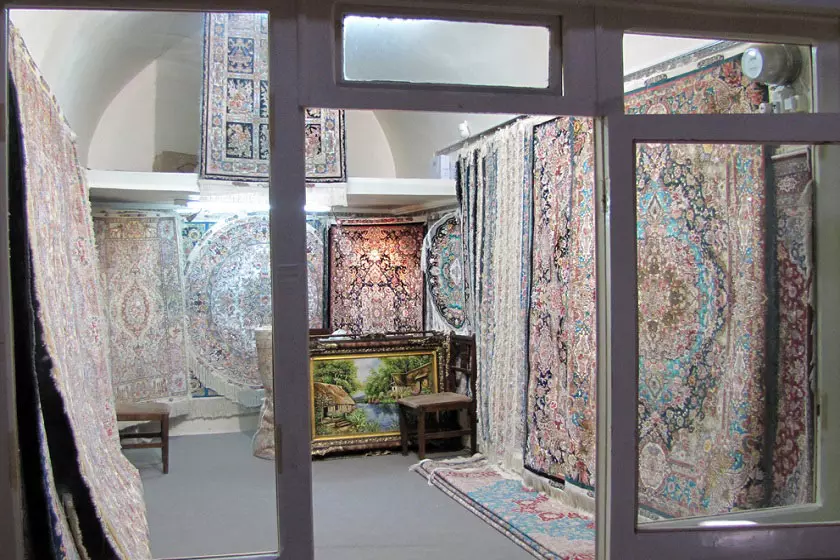
Tabriz city is recognized as one of the main, oldest, and most famous centers of handwoven carpet making in Iran and worldwide. Its carpets have international renown to the extent that the World Crafts Council has chosen Tabriz as the World Carpet City. The history of carpet weaving in Tabriz dates back to before the Safavid era. The variety of designs, colors, and the use of light and shade to create depth attract the attention of every viewer to Tabrizi carpets.
Tabrizi carpets are usually woven with wool (from the mountainous region of Maku) or silk (from Khorasan and Tehran), which contributes to their exceptionally high quality. The warps of most carpets in this region are cotton and durable, while the wefts are made of wool. However, silk carpets are preferable options for souvenirs. Some famous designs of Tabriz carpets include Mastoufi, Eslimi Toranj-dar, Eslimi Lachak-dar, Toranj, Mahi or Herati pattern, Gol-e-dani, Minakhani, Tree design, Pictorial design, Garden or Golistan design, and Hunting ground design.
Verni Weaving or Soumak
Verni, also known as tribal kilim or soumak, is a special handwoven textile made of wool, cotton, hemp, or silk, prevalent among the Arsbaran tribes. Verni is a flat-woven kilim without pile, and knotting is not used in its weaving process. It is commonly used as a floor covering, tapestry, or backrest. This unique kilim, featuring vertical stripes without patterns, is woven mentally by tribal and rural women and girls.
Twisted, gable, and geometric patterns are among the designs that stand out in Verni weaving. In terms of design, pattern, and appearance, Verni bears similarities to carpets, and its weaving is a challenging task. Vernis come in various sizes and are woven in colors such as lacquer, navy blue, white, onion, and light blue. While most Vernis are woolen, silk Vernis, with their delicacy and beauty, are considered more suitable souvenirs.
Kilim
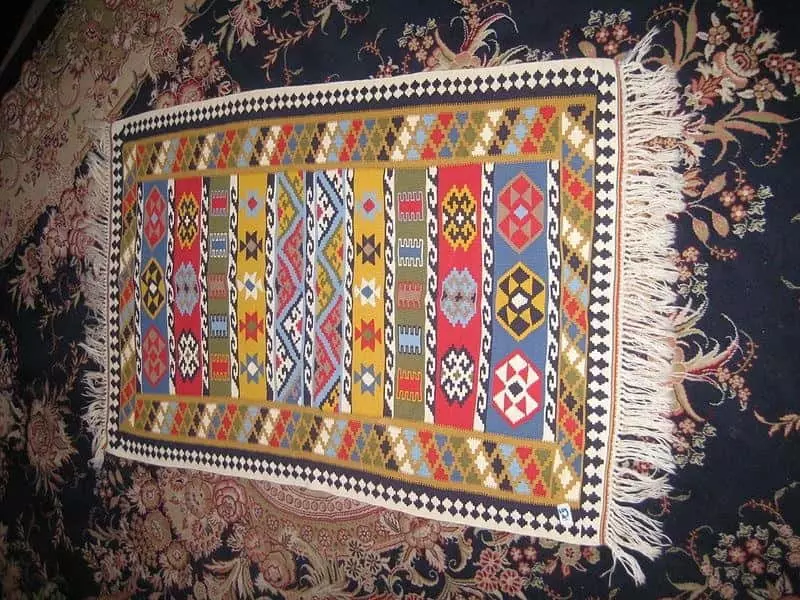
Shahsavan Kilim is the most famous Tabrizi kilim.
Kilim weaving is another art and handicraft of the Azerbaijan region and a handicraft of Tabriz with a history dating back hundreds of years. Kilim is a durable and long-lasting souvenir that Iranians have historically used to cover their walls and floors or as tapestries. Kilim weavers in cities like Tabriz, Shahsavan, Mianeh, Hashtrud, and Maragheh weave kilims in rectangular shapes using wool and silk from sheep and goats and silk, dyed with natural plant-based colors, in various sizes.
Kilims have different designs, but Shahsavan Kilim is one of the most famous kilims in Tabriz, featuring large geometric patterns and narrow stripes of various colors.
Jajim Weaving
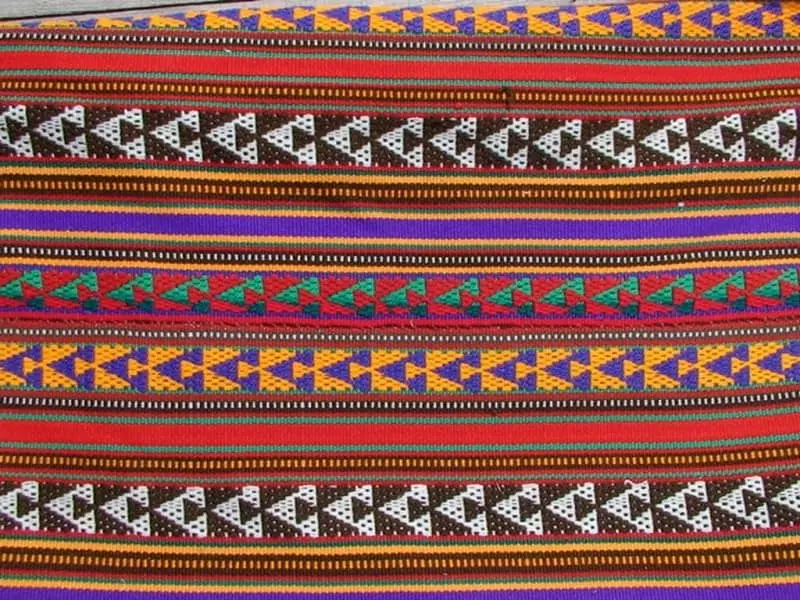
Jajim, like Verni, is a type of tribal handwoven textile that initially has a rough and coarse texture but becomes softer with use. Jajim serves as a double-sided underlay or tapestry (protection against cold among the tribes). Jajim weaving is done with predominantly geometric patterns using colorful and delicate woolen and cotton threads or a combination of wool and cotton. Common patterns include four flowers, brick, pentagon, and sunflower. Jajims are woven in colors like red, green, black, and blue. There is also a type of plain Jajim known as “Jajim-e-Mooj.”
Tabriz Leather Shoes
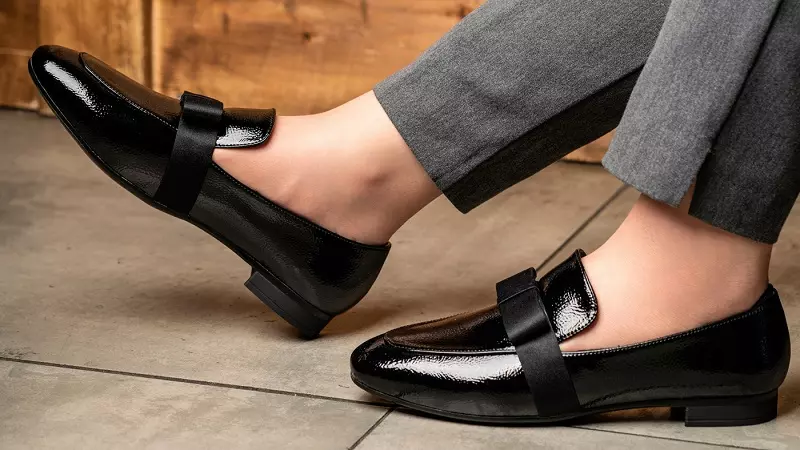
Tabriz is renowned as the leather and shoe industry capital of Iran, a city that has had numerous leather factories and workshops for handmade and industrial shoe production since ancient times, supplying a significant portion of the country’s leather goods. It’s interesting to note that Tabriz leather products have international fame and are exported to various countries. Additionally, these products are among the best souvenirs of Iran.
The first leather factory in Iran was established in Tabriz in 1308. Today, the city of Chermashahr, located about 10 kilometers northwest of Tabriz, is known as the leather production hub of the country, where about 90% of all leather handmade shoes in the country are produced. Handmade Tabriz shoes have a long history and are listed as national treasures of the country. An example of this art, with a history of about five thousand years, is preserved in the museum of Tabriz city.
Silverwork and Silver Engraving
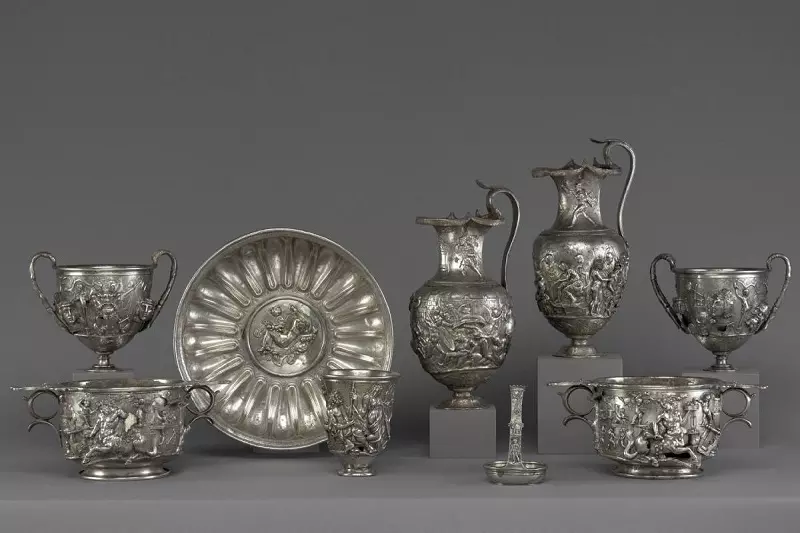
Tabriz boasts a silver industry dating back over 100 years.
Silverwork, silver engraving, and chasing on silver are highly significant handicrafts in Tabriz, with their products such as jewelry, practical and decorative utensils, mirrors, candle holders, trays, samovars, and photo frames ranking among the city’s most precious souvenirs. The silver industry came to Iran from Turkey in 1915 AD and has since been prevalent in Tabriz.
Silver Engraving, which has received UNESCO recognition for the authenticity of its artworks and handicrafts, is a branch of the metalworking industry primarily focusing on engraving on beads made from avocado, ebony, and “Khashkol” (famous for its seed). Items like paintings, canes, pipes, lighter bases, and cups are among the beautiful products of silver engraving, an art that in the past adorned objects like swords and armor.
Metal Engraving
Metal engraving (chasing patterns on metal objects) is a prominent handicraft in Tabriz, sharing many similarities with the metal engraving of Shiraz and Isfahan, yet with its own unique style and context. In Tabriz, metal engraving is done solely by hand pressure using a stylus on various metals such as copper, brass, and silver. The products of this art, such as engraved samovars and metal engraving paintings, have gained global fame, and you can purchase them within any budget. Common designs in Tabriz metal engraving include Slimi, flowers, birds, and arabesques.
Traditional Tabriz Stone Carving

Stone carving is one of the ancient and traditional arts of Iranians, an art that no longer enjoys its former glory, yet Tabriz artists still engage in it, creating valuable pieces using this skill. Stone carving is a form of carving on stone surfaces, where after proper cutting and designing, the desired pattern is carved onto the stone with a stylus. Stone carving products are among the most unique souvenirs of Tabriz.
Stone Inlay Paintings
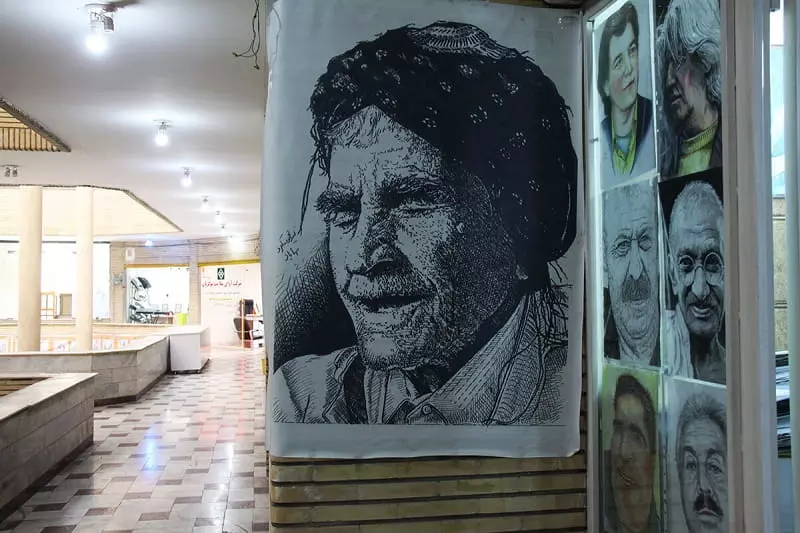
Stone inlay paintings are a new and precious handicraft of Tabriz, also noticeable in the Park of Tabriz Celebrities; an art created by a person named Saber Asghari. These unique artistic paintings, which have been well-received by tourists, usually depict famous and beloved figures using finely designed stones.
Pottery
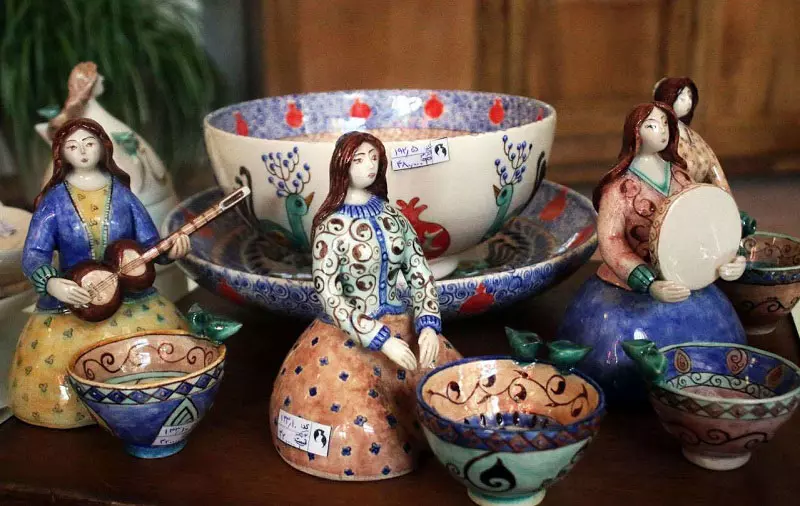
Pottery has been widespread in the regions of Kuzekanan (red clay type) and Zanoz (white clay type) in East Azerbaijan province for about two centuries, an art whose various products such as plates, bowls, cups, saucers, pitchers, teapots, and sugar bowls are offered as souvenirs to tourists in Tabriz today. All stages of making these ceramics, including various painting techniques, embossing, chasing, and carving, are done traditionally.
Painting
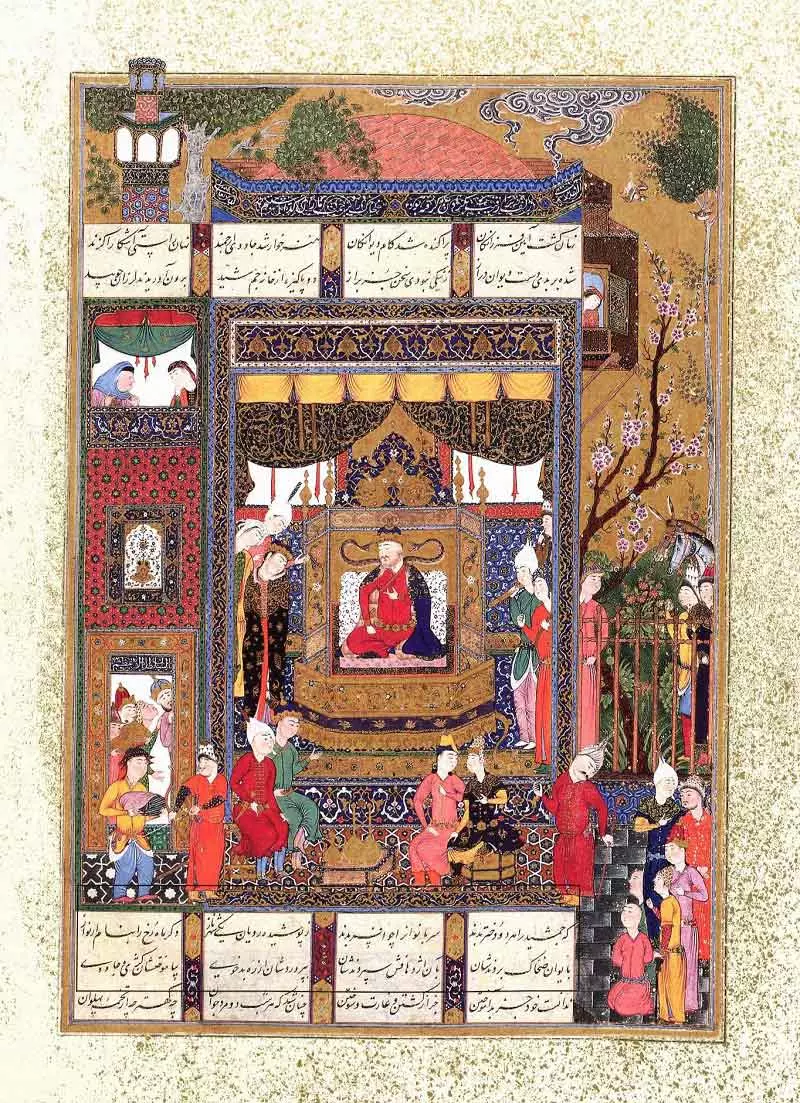
Painting is another authentic Iranian art that is prevalent in various cities across Iran. Painting flourished in Tabriz during the Ilkhanate period and is considered one of Tabriz’s handicrafts today. Painting is done using colors on various surfaces such as paper, canvas, or walls and has been popular in illustrating various books since ancient times. The artworks of painting are very beautiful and unique, making them excellent choices for Tabriz souvenirs.
Batik Printing
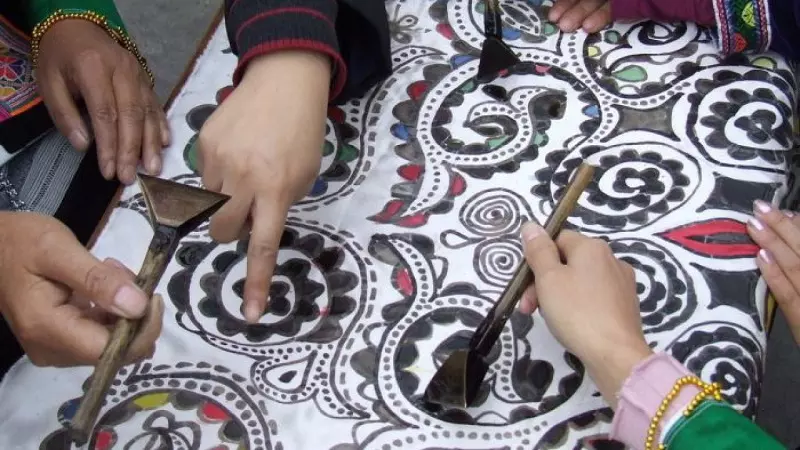
The origin of batik printing art dates back to the region of East Azerbaijan, specifically to the area of Eska. Batik or block printing is used for indirect decoration and coloring of various fabrics. This type of printing, whether done with stamps or without them, or a combination of both methods, is used to decorate various items such as scarves, clothing, bags, tablecloths, beddings, and wall hangings.
In the art of batik printing, the design is stamped onto the fabric using a stamp and a resistant substance (such as gum, wax, paraffin, or resin). Then, the fabric is dyed, and both the warp and weft threads are equally affected. The colors used in batik printing are mainly plant-based (such as madder, woad, pomegranate peel, and turmeric).
Where to Buy Tabriz Souvenirs?
The Grand Bazaar of Tabriz, known as the largest covered bazaar in the world, is one of the best shopping centers in Tabriz for buying handicrafts and edible souvenirs. This ancient bazaar, registered as a UNESCO World Heritage Site in 1389, is distinguished by its architecture consisting of numerous marketplaces, alleys, caravanserais, and corridors. Kafashan Bazaar (Bashmaghji Bazaar) and Tabriz Pottery House are also other markets where you can find leather shoes and ceramic products.
For purchasing sweets and edible souvenirs of Tabriz, you can visit Jam Jam Pastry Shop (on Jam Jam Boulevard), Rex Confectionery, Eftakhari Store (on Mansour Street, near Mansour Bridge), Tabriz Nut Shop (on 29 Bahman Street), Tashrifat Confectionery (on Abrasan Street), Pak Tabriz Confectionery, Tabriz Halva House, and Tavazoe Tabriz Nut and Dried Fruit Shop.
If you have purchased Tabriz souvenirs or know about other souvenirs from this city, share your information with us and other Gulf City Pedia users.
Frequently Asked Questions
What are Tabriz souvenirs?
If you’re wondering what Tabriz souvenirs are, you should know that nougat, Ghorabiye (a type of cookie), Baqlava (baklava), Arys (a type of nougat), Chortmeh (a local candy), Rahat-al-Halqum (a Turkish delight), almonds, Khatai noodles (a type of local sweet), Tasbih-shaped chocolates, Lighvan cheese, carpets and rug paintings, Kilims, Verneh weaving or Soumak, leather products, silverwork and silver engraving, calligraphy, and stone carving are some of the most famous Tabriz souvenirs.
Where to buy Tabriz souvenirs?
The Grand Bazaar and Traditional Bazaar of Tabriz, Kafashan Bazaar (Bashmaghji Bazaar), and Tabriz Pottery House, Jam Jam Pastry Shop (on Jam Jam Boulevard), Rex Confectionery, Eftakhari Store (on Mansour Street, near Mansour Bridge), Tabriz Nut Shop (on 29 Bahman Street), Tashrifat Confectionery (on Abrasan Street), Pak Tabriz Confectionery, Tabriz Halva House, and Tavazoe Tabriz Nut and Dried Fruit Shop.
What are the most famous handicrafts of Tabriz?
Carpet and rug paintings, Roni (a type of cookie), Kilims, Jajim, leather shoes, silverwork and silver engraving, batik printing, painting, stone carving, calligraphy.
What is the history of the silverwork industry in Tabriz in its present form?
In 1915 AD.

